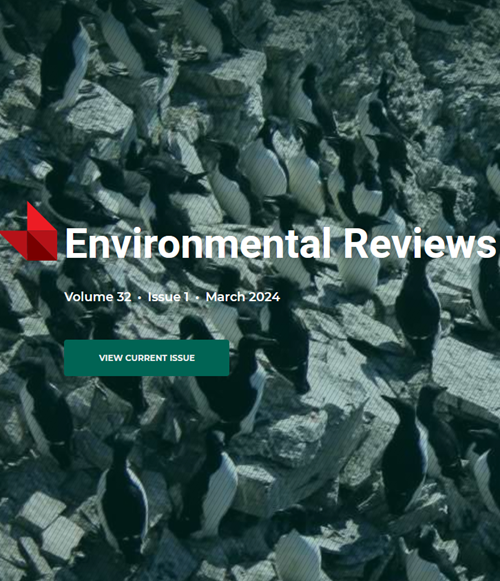Cigarette butts in the environment: a growing global threat?
IF 5.1
3区 环境科学与生态学
Q2 ENVIRONMENTAL SCIENCES
引用次数: 2
Abstract
Cigarette butts (CBs) are composed of cellulose acetate and are a significant source of anthropogenic waste. More than 4 trillion CBs are improperly discarded in natural and urban environments, resulting in the contamination of a variety of ecosystems. The goal of the present study was to obtain information regarding environmental contamination of CBs through a comprehensive systematic review. A literature review was conducted using the Preferred Reporting Items for Systematic Reviews and Meta-Analyses method. “Cigarette butt” and “cigarette filter” were used as keywords in searches in Google Scholar, Scopus, PubMed, ScienceDirect, and SpringerLink databases, where the abstracts were separated, organized, and analysed using IRaMuTeQ software. The review identified 116 articles published in 23 countries, with publication growth observed over the years. Through descending hierarchical classification, two groups and four classes were recognized, whereby different terminologies were specified by factorial correspondence and similarity analyses. The four classes were categorized as follows: (1) ecotoxicological studies, with information about the lethal and sublethal effects of CBs on different organisms; (2) public policies, with discussion pertaining to the problem and possible measures and actions aimed at reducing CB contamination; (3) contamination of public areas, with studies addressing the potential dispersion of this material in the environment; and (4) physicochemical aspects, with evidence of the potential for contamination caused by the components contained in the cigarette filters. However, despite an increasing number of publications over the years and a variety of studies regarding the environmental effects of CBs, there is still an absence of information within each class, requiring further research.环境中的烟蒂:日益严重的全球威胁?
烟头(CBs)由醋酸纤维素组成,是人为废物的重要来源。在自然和城市环境中,有超过4万亿cb被不当丢弃,导致各种生态系统受到污染。本研究的目的是通过全面系统的审查来获得有关CBs环境污染的信息。采用系统评价首选报告项目和荟萃分析方法进行文献综述。在b谷歌Scholar、Scopus、PubMed、ScienceDirect和SpringerLink数据库中以“烟头”和“香烟过滤器”作为关键词进行检索,并使用IRaMuTeQ软件对摘要进行分离、组织和分析。该审查确定了在23个国家发表的116篇文章,多年来观察到出版物的增长。通过下降层次分类,识别出两组和四类,并通过析因对应和相似性分析来指定不同的术语。这四类研究分为以下四个方面:(1)生态毒理学研究,研究CBs对不同生物的致死和亚致死效应;(2)公共政策,讨论与问题有关的问题以及旨在减少CB污染的可能措施和行动;(3)公共区域的污染,研究该物质在环境中的潜在扩散;(4)物理化学方面,有证据表明香烟过滤嘴中含有的成分可能造成污染。然而,尽管多年来越来越多的出版物和各种研究关于CBs的环境影响,仍然缺乏每一类的信息,需要进一步的研究。
本文章由计算机程序翻译,如有差异,请以英文原文为准。
求助全文
约1分钟内获得全文
求助全文
来源期刊

Environmental Reviews
环境科学-环境科学
自引率
3.50%
发文量
45
期刊介绍:
Published since 1993, Environmental Reviews is a quarterly journal that presents authoritative literature reviews on a wide range of environmental science and associated environmental studies topics, with emphasis on the effects on and response of both natural and manmade ecosystems to anthropogenic stress. The authorship and scope are international, with critical literature reviews submitted and invited on such topics as sustainability, water supply management, climate change, harvesting impacts, acid rain, pesticide use, lake acidification, air and marine pollution, oil and gas development, biological control, food chain biomagnification, rehabilitation of polluted aquatic systems, erosion, forestry, bio-indicators of environmental stress, conservation of biodiversity, and many other environmental issues.
 求助内容:
求助内容: 应助结果提醒方式:
应助结果提醒方式:


